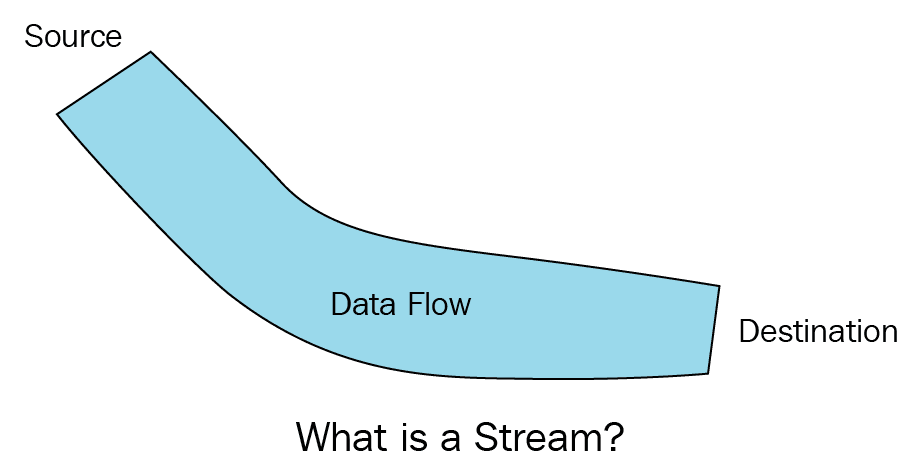Streams In Scala
1st Jul 2023 / 7 min read
An Introduction to Scala Stream

Introduction
In this tutorial, we will explore the concept of streams in Scala and why they are a powerful tool for processing large amounts of data. We will delve into the benefits of using streams, their scalability, and the underlying concepts and operations associated with them. Additionally, we will examine a simple use-case of Scala stream and discuss libraries that implement streams more efficiently. Finally, we will provide best practices for stream processing in Scala. Let's get started!
Why Streams
Streams are an essential part of functional programming in Scala, providing an elegant way to manipulate collections of data. Unlike traditional collections, streams allow for lazy evaluation, which means elements are computed on-demand rather than eagerly computed and stored in memory. This lazy evaluation makes streams particularly suitable for processing large datasets or infinite sequences.
By using streams, we can avoid unnecessary computation and save memory by only evaluating the elements we actually need. Moreover, streams offer composability, allowing us to chain together multiple operations in a concise and readable manner. This composability makes our code more maintainable and easier to reason about.
Stream Scala
One of the significant advantages of streams is their scalability. When dealing with large datasets, it is crucial to process the elements efficiently without causing memory overflow. Streams provide a solution to this problem by employing lazy evaluation. Instead of eagerly computing all the elements, streams evaluate them as they are consumed.
This lazy evaluation allows us to process massive datasets without worrying about memory constraints. As each element is processed, it is discarded from memory, making streams memory-efficient. Moreover, streams are suitable for parallel execution, enabling us to harness the power of multi-core processors and further enhance the performance of our stream processing.
Call-by-name and Lazy Evaluation
To understand streams better, we need to grasp the concepts of call-by-name and lazy evaluation. In Scala, function parameters can be passed by name, which means they are evaluated every time they are referenced. Streams take advantage of this feature by using call-by-name parameters to define their elements.
When we create a stream, each element is defined as a call-by-name parameter. This means that the computation for each element is delayed until the element is actually accessed. As a result, elements are computed on-demand, allowing us to create streams with infinite sequences or perform expensive computations only when needed.
Lazy evaluation plays a crucial role in optimizing stream performance. By deferring computation until necessary, we can eliminate unnecessary operations and improve the efficiency of our stream processing.
Concepts and Operations Associated with Streams
Streams introduce various concepts and operations that enable powerful data manipulation. Let's explore some of the essential concepts and operations associated with streams:
- Head and Tail: A stream is composed of a head element and a tail, which is another stream. The head represents the first element of the stream, while the tail represents the remaining elements.
- Cons operator: The cons operator
::is used to create a stream by prepending an element to an existing stream. For example,1 :: streamcreates a new stream with1as the head andstreamas the tail.
- Lazy Evaluation: As mentioned earlier, streams employ lazy evaluation, which means that elements are computed only when accessed. This allows for efficient memory usage and the ability to handle infinite sequences.
- Filter: The
filteroperation allows us to apply a predicate to each element in the stream and return a new stream containing only the elements that satisfy the predicate.
- Map: The
mapoperation transforms each element of the stream by applying a given function. It returns a new stream with the transformed elements.
- Reduce: The
reduceoperation combines the elements of the stream into a single value by applying a binary operation. For example, we can usereduceto find the sum of all elements in a stream.
A Simple Use-case of Scala Stream
To better understand how streams work, let's consider a simple use-case. Suppose we have a list of numbers and want to find the sum of all even numbers. We can achieve this using streams in Scala:
val numbers = List(1, 2, 3, 4, 5, 6, 7, 8, 9, 10)
val sumOfEvens = numbers.toStream.filter(_ % 2 == 0).sum
In the above code, we convert the list of numbers to a stream using the toStream method. We then apply the filter operation to keep only the even numbers and finally calculate the sum using the sum operation. The stream processing allows us to perform these operations efficiently without storing unnecessary intermediate results in memory.
Libraries that Implement Streams Better
While Scala provides built-in support for streams, there are external libraries that offer enhanced functionality and performance. Some popular libraries for stream processing in Scala include:
- Akka Streams: Akka Streams is a reactive streams library that provides a high-level API for building scalable and resilient stream-based applications. It offers advanced features such as backpressure handling and integration with other Akka components.
- fs2: fs2 (Functional Streams for Scala) is a purely functional streaming library that focuses on composability and resource safety. It provides a simple and expressive API for stream processing and offers various utilities for handling streams efficiently.
- Monix: Monix is a reactive programming library that includes a powerful streaming component called
Observable. It offers a rich set of operators and supports backpressure handling and asynchronous processing.
These libraries provide additional features and optimizations that can greatly enhance stream processing in Scala. Depending on your specific requirements, you can choose the library that best fits your needs.
Best Practices for Stream Processing in Scala
To make the most out of streams in Scala, it is essential to follow some best practices. Here are a few guidelines to consider:
- Avoid unnecessary computations: Since streams evaluate elements on-demand, it is crucial to avoid unnecessary computations. Use lazy evaluation to defer computation until necessary and filter out elements that are not required.
- Watch out for memory usage: Although streams are memory-efficient, it is still important to be mindful of memory usage, especially when dealing with large datasets. Make sure to discard processed elements from memory to prevent memory overflow.
- Consider parallel processing: If your stream processing can benefit from parallel execution, explore parallel processing options provided by libraries like Akka Streams or fs2. Parallel processing can significantly improve performance, especially when dealing with computationally intensive tasks.
- Test your stream processing: As with any code, it is crucial to thoroughly test your stream processing logic. Write unit tests to ensure that your streams produce the expected results and handle edge cases correctly.
By following these best practices, you can write efficient and reliable stream processing code in Scala.
Conclusion
Streams in Scala offer a powerful tool for processing large amounts of data efficiently. By leveraging lazy evaluation and composability, streams allow us to manipulate collections of data in a memory-efficient and scalable manner. We explored the benefits of using streams, the underlying concepts and operations, and examined a simple use-case. We also discussed libraries that implement streams more effectively and provided best practices for stream processing in Scala. With this knowledge, you can leverage the full potential of streams and write high-performance stream processing code. Happy streaming!
References
Recent Articles
